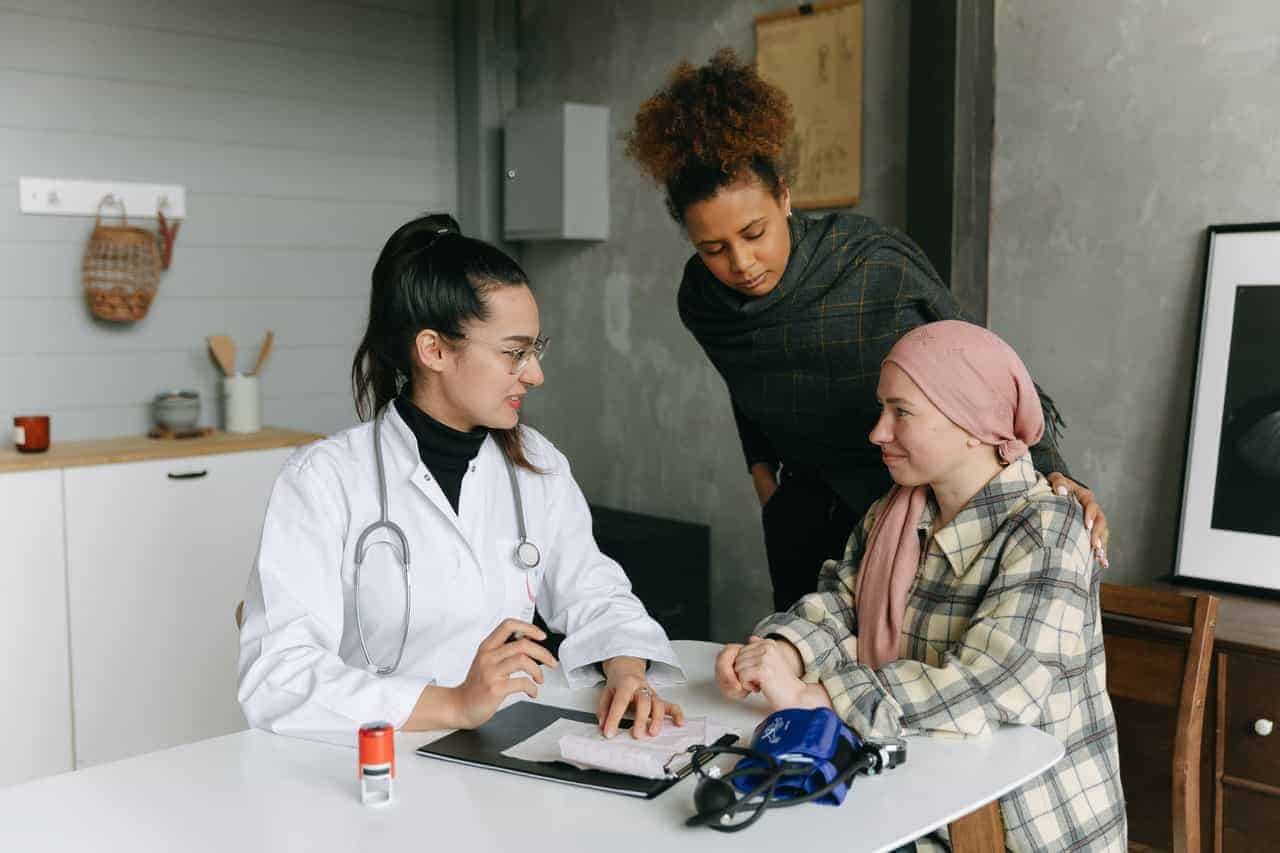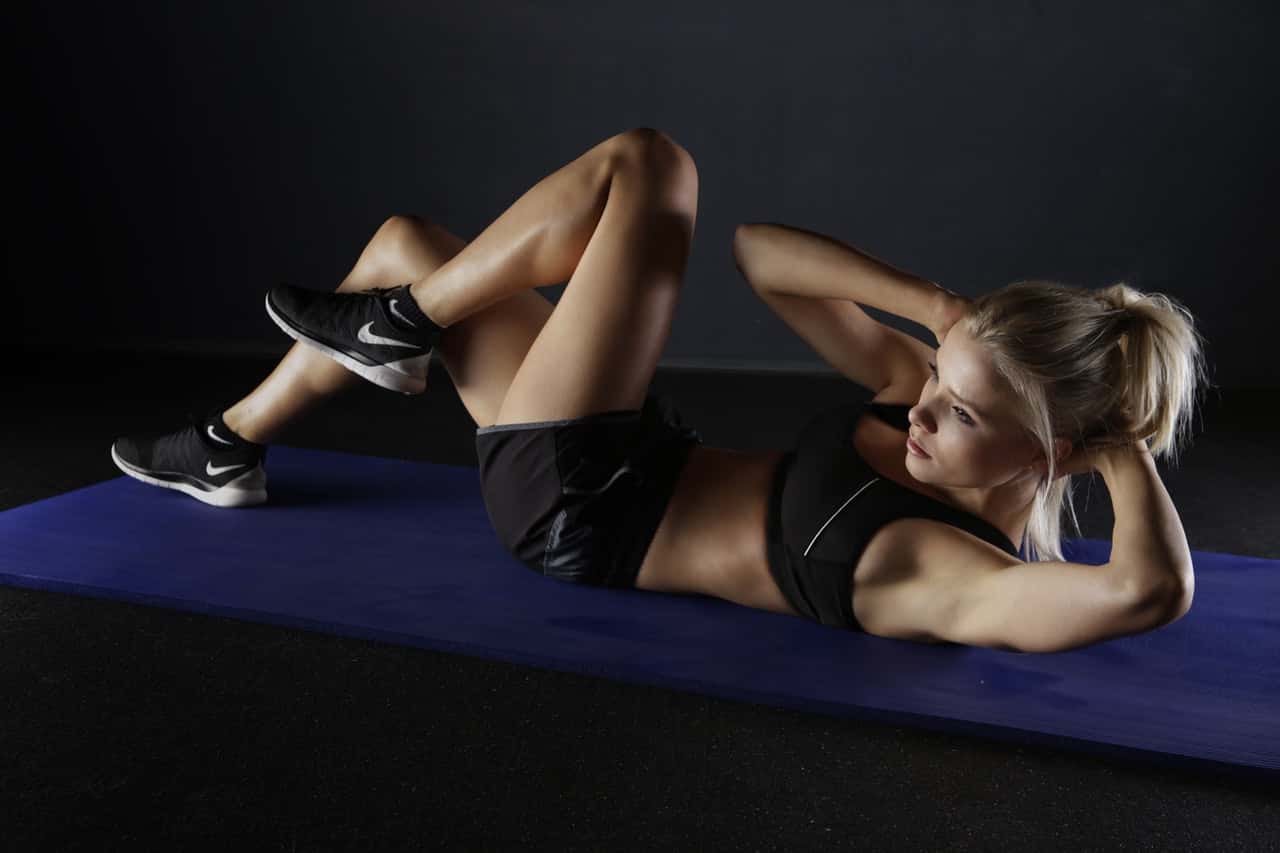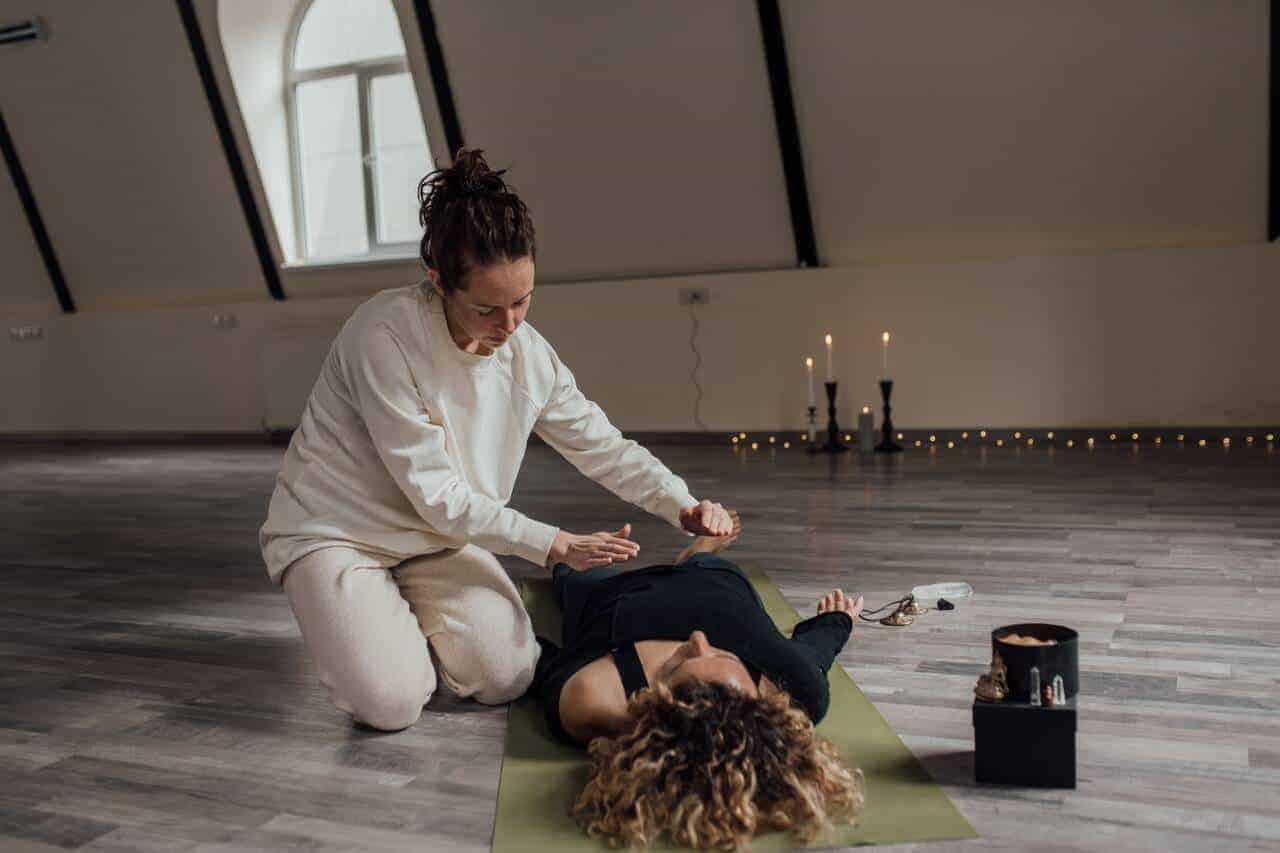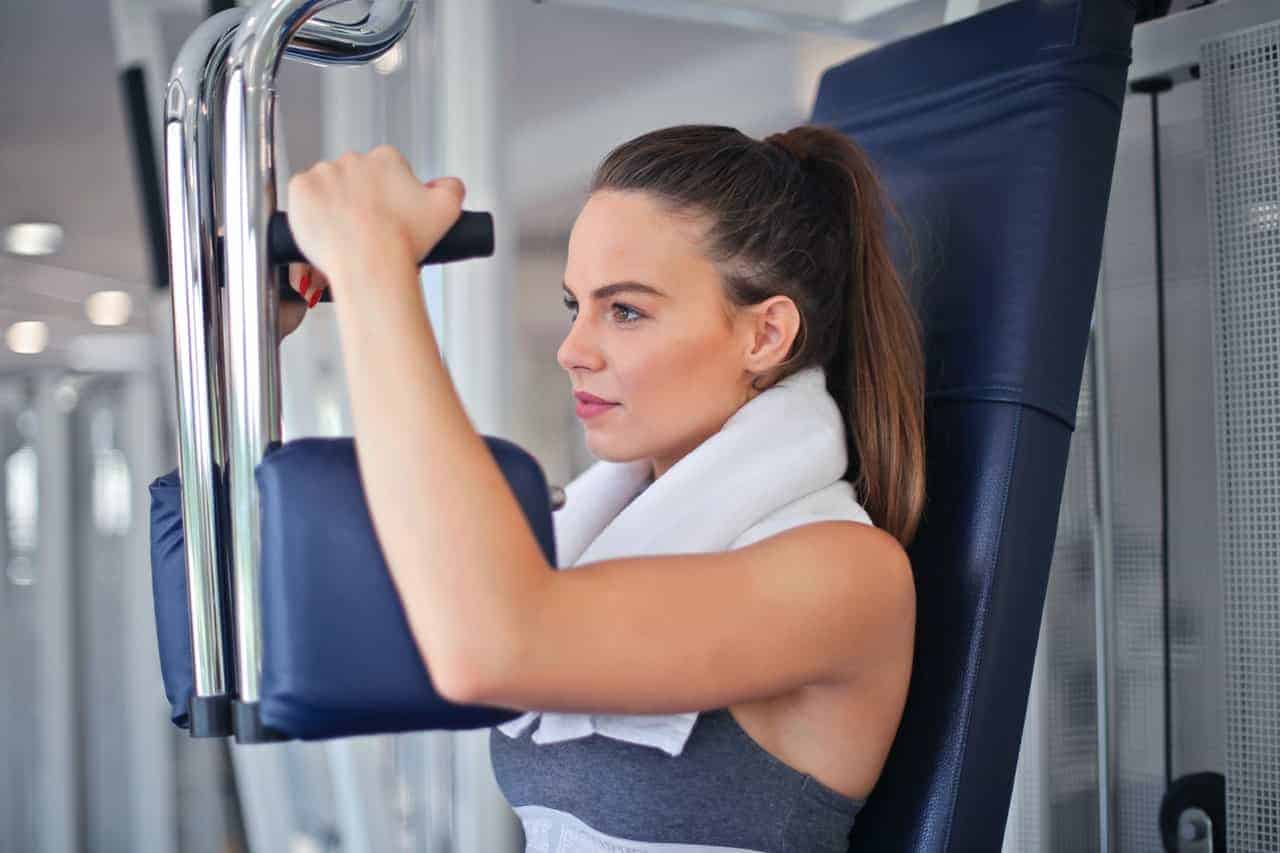Anterior knee pain, more commonly known as patellofemoral pain syndrome (PFPS), is an increasingly common musculoskeletal condition that can significantly affect one’s quality of life.
It is characterized by localized anterior knee pain and/or tenderness in the area around the kneecap (patella) and femur which can present with a variety of associated symptoms including swelling, crepitus, increased warmth or redness.
While there are various treatment options available to alleviate PFPS-related symptoms, it is essential for individuals affected by this condition to understand how best to care for their specific needs.
This article will discuss strategies and techniques that have been proven effective in managing PFPS, helping those struggling with this condition take control of their physical health and wellbeing.
Understanding Anterior Knee Pain:
Anterior knee pain, sometimes referred to as patellofemoral pain syndrome, is a common problem experienced by people of all ages. It affects the area around your kneecap and can be caused by activities that involve repetitive motion or stress on the joint.
The main components affected in this condition are tendons, cartilage, ligaments, and the kneecap itself. The cause of anterior knee pain can range from overuse injuries such as tendonitis or bursitis to more severe problems like misalignment of the bones or inflammation of the soft tissue surrounding it.
Diagnosis usually requires an assessment by a physiotherapist who will determine what type of treatment is needed to address any underlying issues causing the discomfort. With proper treatment and activity modification, symptoms associated with anterior knee pain can often be alleviated quickly.
Transitioning into understanding the causes behind this type of pain can help provide insight into how best to manage it moving forward.
Causes Of Anterior Knee Pain:
Patellofemoral pain syndrome is a common cause of anterior knee pain or common causes of knee pain, which affects the patellofemoral joint between the kneecap (patella) and femur.
It is typically caused by overuse or incorrect use of this area, leading to inflammation in the muscles surrounding the patella as well as irritation of bursae located around the area.
Sometimes heavy workout cause knee pain because you can not straighten your knee without knee cap it affects the knee. Due to this severe pain you can not bend or straighten your knee. It also causes of pain in back of the knee or outer side of the knee. Remember, knee is a complex and there are several possible causes.
In some cases, weakness in quadriceps muscles can also contribute to anterior knee pain due to strain on tendons during movement. Heavy strain always cause knee or back of your thigh pain. Treatment may vary for every situation of hip and knee.
Excessive activity or an increase in physical intensity can worsen symptoms like stiffness, swelling, and soreness as they further irritate these structures.
Individuals who participate in activities involving running, jumping, squatting, climbing stairs are especially at risk for developing patellofemoral pain syndrome and aching pain in the knee or parts of the knee.
To prevent such issues it’s important to practice proper form when exercising and incorporate rest days into your routine.
Transitioning smoothly from one exercise to another will help reduce any unnecessary stress on joints that could lead to painful consequences.
Diagnosis Of Anterior Knee Pain:
Anterior knee pain is a common complaint amongst patients and can be caused by a variety of conditions, such as patellofemoral pain syndrome.
Symptoms of anterior knee pain may include localized tenderness, pain with activities such as squatting or running, swelling, and crepitus.
Diagnostic tests for anterior knee pain include physical examination, imaging, and occasionally functional testing.
Treatment of anterior knee pain is based on the underlying cause and may include rest, strengthening exercises, and in some cases, surgery.
Symptoms:
The symptoms of anterior knee pain, also known as patellofemoral pain syndrome, include pain in the front of the knee when walking up or down stairs, squatting and jumping. The knee may be tender to touch around the kneecap area and there may be a grinding sensation when moving the joint. Other causes of knee pain, such as problems with the patellar tendon or ligaments can often result in similar feelings of discomfort.
It is important for individuals experiencing any degree of persistent knee pain to have an accurate diagnosis by a qualified physiotherapist or physical therapist to identify the underlying cause and create an effective treatment plan.
Physical therapists are skilled at assessing posture, strength and mobility to help diagnose issues that are causing pain in the front of the knee. This includes looking at how muscles move during activities such as running or cycling which can provide valuable information about what might be causing the pain.
By understanding factors such as muscle imbalances and incorrect movement patterns, it becomes easier to develop strategies to reduce stress on joints that are leading to inflammatory responses and resulting in discomfort.
Diagnostic Tests:
Once the patient has described their symptoms, a physical therapist can then perform a physical exam to assess knee pain. This may include observation of how the joint moves and feeling for any tightness or tenderness in the affected area.
X-rays can also be taken to rule out any underlying bony changes that could cause patellofemoral pain syndrome such as an abnormally shaped kneecap (patella) which is known as chondromalacia patella. In some cases, MRI scans may be used to diagnose issues with ligaments, tendons and cartilage surrounding the knee joint.
In order to accurately diagnose anterior knee pain, it is important for patients to provide detailed information about activities they have been involved in prior to onset of discomfort including running and jumping sports like football or basketball where conditions like jumper’s knee (patellar tendon inflammation) or runner’s knee (iliotibial band friction syndrome) are common causes of knee injury related pain.
With this knowledge combined with diagnostic tests, physiotherapists and physical therapists can create effective treatment plans tailored specifically for each individual patient.
Symptoms Of Anterior Knee Pain:
Anterior knee pain, or patellofemoral pain syndrome (PFPS), is a common condition experienced by people of all ages. It usually presents as an ache inside or around the kneecap that can cause significant discomfort and limit physical activity.
The exact causes of anterior knee pain are not always known, but contributing factors can include weak thigh muscles, tight ligaments and tendons surrounding the knee joint, misalignment of the kneecap, overuse from repetitive activities such as running, jumping, squatting and climbing stairs, direct trauma to the front of your knee and changes in body weight.
It is important for anyone experiencing recurrent or persistent anterior knee pain to take preventive measures.
Exercises to strengthen hip and core muscles should be implemented to reduce strain on the knees during daily activities. Stretching exercises for quadriceps muscles may also help prevent further aggravation of this condition. Additionally, proper footwear with appropriate cushioning support can help reduce runner’s knee symptoms when engaging in sports activities such as running and walking.
Taking regular breaks while exercising is also recommended to give your legs a chance to rest and recover more quickly after any strenuous activity involving the knees. By taking these measures you may be able to reduce your risk of developing PFPS or manage existing symptoms more effectively.
Treatment For Anterior Knee Pain:
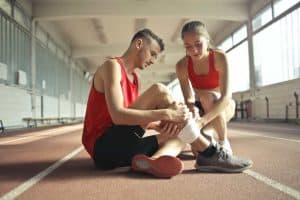 Anterior knee pain, sometimes referred to as Patellofemoral Pain Syndrome (PFPS), is a common condition among athletes and non-athletes alike. It can affect the function of your knees in daily activities such as climbing stairs, running or squatting.
Anterior knee pain, sometimes referred to as Patellofemoral Pain Syndrome (PFPS), is a common condition among athletes and non-athletes alike. It can affect the function of your knees in daily activities such as climbing stairs, running or squatting.
Treatment for anterior knee pain often includes:
- Exercise programs: Strengthening muscles around the knee joint like the quadriceps tendon and meniscus using specific exercises tailored to individuals’ needs can help alleviate symptoms.
- Physical therapy: A physiotherapist/physical therapist may prescribe manual techniques along with therapeutic modalities such as ultrasound, massage, or dry needling to reduce inflammation and improve mobility.
- Orthotics: Custom orthotics provide support for ankle and feet by improving alignment of joints which reduces strain on surrounding tissues leading to less pain when standing or walking.
- Sports medicine consultation: An experienced sports medicine physician provides an assessment of your current physical activity level and suggest modifications that could decrease stress on your knees while still participating in desired activities.
These treatments are designed to address the underlying cause of anterior knee pain, rather than masking it with medications. With appropriate treatment and modification, you should be able to return to normal activities without any further issues related to PFPS.
Medications For Anterior Knee Pain:
Given the complexity of anterior knee pain, it is important to understand the various causes and potential treatments. Medications can be used in combination with physical therapy to help manage this condition.
The most common cause of patellofemoral pain syndrome is an imbalance between the quadriceps muscle group located on the front of the thigh, and hamstring muscles found at the back of the thigh leading to increased pressure on the knee joint.
Pain and swelling could also occur due to a meniscus tear or inflamed bursa in the knee region.
The choice of medications will depend upon what symptoms are present as well as individual medical history. Non-steroidal anti-inflammatory drugs (NSAIDS) such as ibuprofen may be prescribed for inflammation related pain while topical creams may provide relief from skin irritation caused by swelling around the kneecap area.
Simple analgesics like paracetamol can also be used if NSAIDs are not suitable for use.
Corticosteroid injections into the affected areas may be recommended if other therapies have not been successful in managing symptoms.
It is essential that any treatment plan should involve identifying lifestyle factors which might contribute towards causing further damage to already weakened cartilage structures in your joints along with appropriate exercises designed specifically for strengthening weak muscles and improving range of motion around your knees.
Physical Therapy For Anterior Knee Pain:
Physical therapy is an effective treatment option for people experiencing anterior knee pain, otherwise known as patellofemoral pain syndrome.
This type of knee pain is typically caused by the repetitive motion of the kneecap sliding across the shinbone and rubbing against the tendon below.
Physical therapists are skilled in providing exercises that target this area to reduce symptoms associated with patellofemoral pain syndrome. They may use manual techniques such as massage or joint mobilization to release tension and restore flexibility before prescribing therapeutic exercise programs that focus on strengthening muscles around the hip, thigh, and shinbone to improve stability and correct alignment of the kneecap as it moves up and down during activities.
Through these interventions physical therapists can help relieve discomfort from anterior knee pain while promoting long-term musculoskeletal health.
Moving forward, individuals looking to further manage their knee problems may consider surgical options.
Surgery For Anterior Knee Pain:
Anterior knee pain can be a challenging condition to manage, but there are options available for those who suffer from patellofemoral pain syndrome. Surgery may be an option for some cases if the conservative treatment methods fail to alleviate symptoms.
Here are some of the most common surgical procedures used to address anterior knee pain:
- Arthroscopic surgery – During this procedure, surgeons use small instruments and cameras that fit through tiny incisions in order to access the inside of the joint and remove any debris or scar tissue that could be contributing to the patient’s discomfort.
- Realignment surgeries – These types of surgeries can help correct misalignment of the kneecap (patella) on your shinbone (tibia). This type of realignment can reduce pressure placed on the bottom of your kneecap by adjusting its position relative to the front of your thigh.
- Lateral release surgery – This is designed to loosen up tightness around your kneecap caused by a tendon that connects it to other structures around it, allowing it more room within its groove as you move your leg during activities such as walking or running.
- Femur osteotomy – If severe deformity has occurred due to arthritis, then this surgery is done where part of the thigh bone (femur) is cut in order for alignment correction purposes between lower leg bones and hip joints so that knee pain often associated with arthritis is reduced significantly when performed correctly.
The goal of these surgeries is typically not only relieving current levels of discomfort, but also preventing further damage and facilitating improved movement patterns over time.
While surgery remains one avenue for treating anterior knee pain, prevention strategies should also be considered in order to avoid future recurrence or exacerbation episodes.
Preventing Anterior Knee Pain:
Warming up before exercise is an important factor in preventing anterior knee pain, as it helps to prepare the muscles and body for activity.
Strengthening leg muscles is also a key factor in reducing the risk of anterior knee pain, as strong muscles and tissues can better absorb the shock and pressure of physical activity.
To properly warm up, dynamic exercises that focus on the quadriceps, hip, and gluteal muscles are recommended.
As for strengthening, exercises such as squats, lunges, and isometric holds can help to build the strength and stability of the leg muscles.
Warming Up Before Exercise:
It is important to warm up prior to any exercise that may involve loading of the lower extremities.
Warming up before physical activity can help reduce the risk of developing anterior knee pain such as patellofemoral pain syndrome (PFPS).
A thorough warm-up should involve dynamic stretching and light aerobic activities, with the focus being on increasing blood flow and core temperature in order to prepare the muscles, joints and tendons for more intense activities.
Shinbone mobilization exercises are also beneficial in reducing stress at tendon insertions which helps prevent overuse injuries.
The combination of these warming techniques will reduce strain on the musculoskeletal system, particularly within the knee joint as it provides greater shock absorption during high intensity movements.
Additionally, properly warming up allows for better coordination between muscle groups; this leads to improved performance and reduced fatigue due to an increase in muscular endurance.
In summary, a comprehensive warm-up routine can significantly minimize chances of developing anterior knee pain associated with PFPS.
Strengthening Leg Muscles:
Strengthening leg muscles is an important part of a comprehensive plan for preventing anterior knee pain.
Straightening the knee, behind the knee and quadriceps muscle strength can help to improve stability of the knee joint and reduce stress on ligaments, tendons and muscles surrounding the area.
This will in turn help to relieve pain and prevent further injuries from occurring.
A physiotherapist or physical therapist can assist with creating an individualized treatment plan which includes strengthening exercises tailored to the patient’s needs.
These may include single-leg squats, step ups, lunges and calf raises that are designed to target specific areas that need extra attention in order to gain back functionality and return to pre-injury activity levels.
Post-Treatment Care For Anterior Knee Pain:
After treatment for patellofemoral pain syndrome, the knee must be cared for in order to ensure full recovery. Adopting a post-treatment care plan can help reduce inflammation and prevent further injury or discomfort.
Common treatments for this condition include:
- Strengthening exercises that target the muscles around the kneecap (quads, hamstrings, calves). These should be performed regularly without overworking them.
- Other forms of therapy such as stretching and aerobic exercise may also provide relief from symptoms, while massage techniques can improve flexibility in the knee joint.
Lifestyle modifications are necessary, including:
- Wearing appropriate footwear when running or walking on hard surfaces
- Avoiding activities that involve excessive bending of the knees (such as squatting)
- Maintaining a healthy weight range
- Monitoring posture during daily activities to minimize pressure on the kneecap.
It is important to remember that managing anterior knee pain requires an individualized approach tailored towards each patient’s needs and preferences. With guidance from a healthcare professional and adherence to an effective post-treatment care plan, individuals with patellofemoral pain syndrome can experience significant improvement within weeks of treatment.
Conclusion:
Anterior knee pain can be a debilitating condition to live with, but there are many treatment options available for those affected by the disorder.
Physical therapy is one of the most effective treatments in managing patellofemoral pain syndrome and reducing symptoms associated with anterior knee pain.
Additionally, self-care strategies such as rest, ice, compression and elevation can help ease discomfort while strengthening exercises may improve joint stability.
While surgery may be necessary in some cases to reduce chronic anterior knee pain, it should always be discussed with a medical professional before any decisions are made.
With proper care and attention, people suffering from this condition can find relief and get back to living an active lifestyle.
We are young/teen girls and boys. We enjoy our life using travel blog and outings and watching people’s lifestyle blog. We try to share our knowledge and what we are looking. We discussed with various people from our and other countries about fashion blog and health blog related knowledge sharing. We get tips and just share them.
Some of us are pure technology blog love guys and girls who share some tips about internet and business blog related. Some of my friends share knowledge on baby care , home improvement, beauty tip blog, and general knowledge. You can easily read our blogs in your free time or on Sunday and get more information with enjoying knowledgeably sharing. That’s why we called Sundaybestblog.
Share This!!



